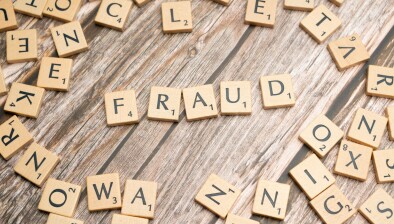Increasing contactless limit could cause a rise in theft and fraud, finance officials warn

Increasing the contactless payment spending limit could lead to a rise in thefts and fraud, consumer and finance figures have warned.
On Thursday, Chancellor Rishi Sunak announced that the contactless payment limit in shops would rise to £100.
The Treasury said that the change from the current £45 limit would make transactions easier than ever and would provide a big boost to the UK’s struggling retail sector.
The UK Government said eight out of ten UK adults used contactless payments in 2019, and the rise in limits will mean millions of payments will now be made simpler.
While the decision may be welcome news for shoppers, some in the finance and consumer industry have warned that the increase in funds available to spend without typing in a pin could be seized on by criminals.
The number of consecutive transactions made before users are required to provide their PIN remains at five.
Gareth Shaw, head of money at consumer research and advice body Which?, said: “The risk of falling victim to contactless card fraud is currently low, but there is potential for thefts to rise if criminals take advantage of the increased spending limit to maximise the amount they can steal.”
Ricky Lee, chief executive and co-founder of banking app sync, said contactless payments are a ‘good thing’ but warned that the payment method is vulnerable to fraud.
He added that there is always a chance that thefts could rise as criminals are tempted by the increased contactless limits. He said: “A criminal could spend hundreds of pounds in just a few minutes, so a payment card can be a big target.”
Andy Renshaw, from Feedzai, a data science company that looks at fraud risk for financial institutions, commented: “While done with the objective of boosting high street shopping, this move means that banks will have to work even faster to identify and block potentially suspicious transactions.
“Of particular interest will be how much a fraudster can spend in total between each chip and pin verification (expected to be £300).
“While we expect that all the necessary precautions will be put in place, there is certainly an added element of risk that will need to be accounted as banks and customers adapt.”
Nick Thomas-Symonds, the shadow home secretary, said it is “absolutely vital” the Government provides “greater reassurance, since raising the contactless limit to £100 effectively means people are carrying even more valuable possessions with them”.
Mr Shaw said limits will still be in place on the number of transactions made before a PIN is requested and banks will be expected to refund money lost through such crimes, The Herald reports.
He urged people to report lost or stolen cards to banks as soon as possible, check statements regularly for suspicious transactions and not to keep cards in easily accessible pockets or bags.
Action Fraud has advised shoppers to always check the amount before paying and never to hand over a card during a purchase, particularly for contactless payments.
It said people should shield the keypad when typing in a pin, sign the backs of new cards immediately and make sure old cards are cut through the magnetic strip and chip once they’ve expired or been cancelled.
UK Finance urged that contactless fraud rates ‘remain low’, with losses dropping by 20% to £8.2 million in the first half of the year – the equivalent to 2p in every £100 spent using such technology, down from 2.7p reported in 2019.
While it has been legally in force since the budget announcement last week, the increase will not happen immediately as firms will need to make systems changes, with banks set to introduce it later this year.







